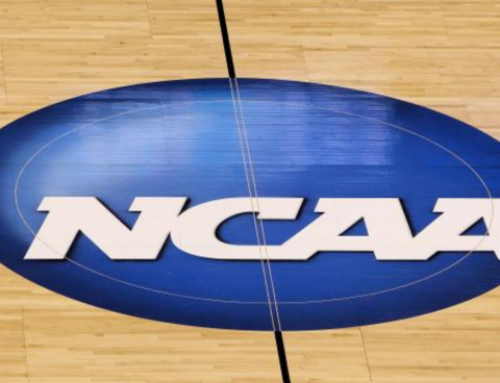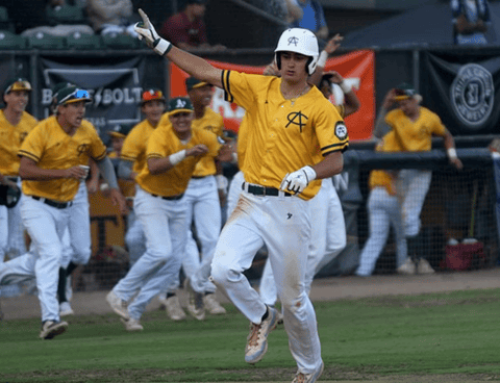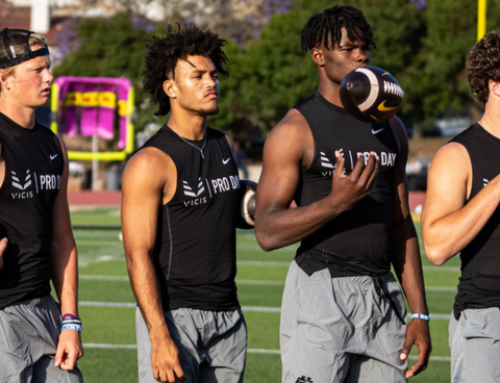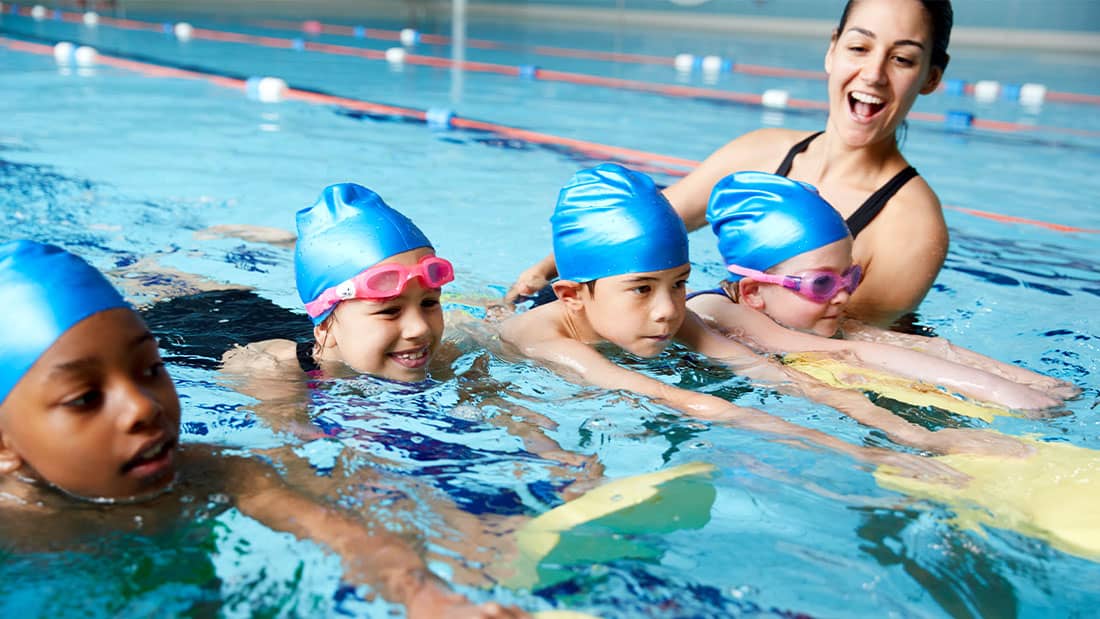The NCAA Division III Student-Athlete Experience
As I near my last season of competitive soccer, I cannot help but be grateful that I still have the chance and the will to continue playing. After having played on many teams, overcoming ACL surgery and navigating my way through the college recruiting process, I was able to find a competitive Division III program that allows me to contribute, learn and grow both as a soccer player and as an individual.
My soccer experience at Pomona College, one of the five Claremont Colleges in southern California, has not only challenged and improved my soccer skills, but also has deepened my love and appreciation for the game. What’s more, playing at the Division III level has permitted me to be a student-athlete in every sense of the word, meaning that my studies and academics take precedence over my athletic responsibilities, instead of the reverse.
I am a double major in French and International Relations, and I have had the opportunity to act in a theater production, become a member of my school’s Judiciary Board and study abroad in France. I know what it takes to be a successful student-athlete both on and off the field, and I would like to share my experiences as a Division III athlete and how that path can offer appealing alternatives for athletes interested in both competitive athletic and academic environments.
As a junior in high school, I realized that I wanted to play soccer at a liberal arts college at the D-III level. Although I had dedicated huge amounts of time and effort to soccer, I knew my degree was going to take me much further in life than my soccer skills, and I wanted to focus on doing well academically, developing relationships with my peers and professors, and pursuing internships and research positions in addition to having a positive soccer experience.
In addition, I learned that Division I programs can restrict your class schedule, your choice of major, and your decision to study abroad—sacrifices that I was not willing to make as a naturally curious and far-reaching student.
Was I good enough to be a Division I soccer player? Maybe. But I would likely have had a difficult time starting and getting as much playing time as I was used to in high school. Knowing that I only had four years of college soccer before the end of my career, I wanted to play as much as possible. Going the D-III route better assured, but did not guarantee, that I would see playing time. I reached out to a variety of small liberal arts schools throughout my junior year, attended summer camps, did overnight visits, and ended up applying Early Decision to Pomona College.
Fortunately, my experience as a student-athlete at Pomona has fulfilled my expectations.
Though it is a balance, I can have both a high-level academic and athletic experience. I am able to major in any subject I choose (including the sciences), take a full course load during the season and pursue research positions and internships.
Although my professors make concessions if I miss class because of a soccer match, they treat me no differently because I am an athlete. They expect the same kind of work and output as my “non-athletic” peers. Like any other student, I turn in just as many assignments as my classmates, attend mentor sessions and office hours, and get decent grades. My peers also treat me no differently. I can comfortably say that I have great friends who are non-athletes, in addition to all of the friendships that I have on my team and within the athletic community.
That being said, I have to balance my schedule to allow time for both soccer and academics. But if you love both and know you can handle a heavy load, balancing is not a burden. Even though my academics do at times take precedence over my athletics, whether I am late coming from a lab session or need to leave practice early for a mentor session, that by no means reduces my or my teammates’ intensity and commitment to our program.
When we are on the field, we are there to train and to compete. We want to win just as much as any team. Moreover, I am on a team of women who not only challenge me on the field, but who are also studying a variety of subjects and have big plans for themselves once they finally hang up their cleats—to become doctors, pursue graduate school, work with non-profits, travel internationally, and work in the corporate world. Our conversations during warm-ups and dinners cover a variety of topics, and we learn and inform ourselves based on what everyone has to say. Because our program fosters a close-knit community year after year, it has a strong alumni network, so girls can reach out to older girls for career advice or potential business opportunities.
Let me be clear: D-III is not for every athlete. For athletes who want to turn pro after college, who want an intense day-in and day-out training experience, or who need an athletic scholarship to attend college (D-III schools offer only academic scholarships and financial aid), Divisions I and II are preferable.
Although the yearlong commitment to athletics at Division III schools is less than it is D-I and D-II schools, this does not mean that D-III athletes love or enjoy their sport any less. While in season, D-III teams are just as competitive, intense and goal-oriented as those who play at higher levels; and since their off-season commitment is typically less than D-I and D-II (arguably one of the biggest differences), D-III athletes tend to burn out less often. However, I will concede that D-III players may decide to quit the sport because there is no financial obligation to play, or because other commitments and interests begin to take precedence over athletics.
I have had a great experience playing soccer at the D-III level. I know that this experience is not for everyone, but my hope is to inform high school student-athletes who are interested in this kind of experience and to inspire them to look into Division III programs. You can have the best of both worlds, but it is up to you to research which school and program is right for you, contact the coach, and see where it goes from there.
I would like to leave readers with this piece of advice: Be honest about what you want out of your college experience, both academically and athletically, and be realistic in setting and pursuing your goals.
Read More on the College Recruiting Process:
[cf]skyword_tracking_tag[/cf]RECOMMENDED FOR YOU
MOST POPULAR
The NCAA Division III Student-Athlete Experience
As I near my last season of competitive soccer, I cannot help but be grateful that I still have the chance and the will to continue playing. After having played on many teams, overcoming ACL surgery and navigating my way through the college recruiting process, I was able to find a competitive Division III program that allows me to contribute, learn and grow both as a soccer player and as an individual.
My soccer experience at Pomona College, one of the five Claremont Colleges in southern California, has not only challenged and improved my soccer skills, but also has deepened my love and appreciation for the game. What’s more, playing at the Division III level has permitted me to be a student-athlete in every sense of the word, meaning that my studies and academics take precedence over my athletic responsibilities, instead of the reverse.
I am a double major in French and International Relations, and I have had the opportunity to act in a theater production, become a member of my school’s Judiciary Board and study abroad in France. I know what it takes to be a successful student-athlete both on and off the field, and I would like to share my experiences as a Division III athlete and how that path can offer appealing alternatives for athletes interested in both competitive athletic and academic environments.
As a junior in high school, I realized that I wanted to play soccer at a liberal arts college at the D-III level. Although I had dedicated huge amounts of time and effort to soccer, I knew my degree was going to take me much further in life than my soccer skills, and I wanted to focus on doing well academically, developing relationships with my peers and professors, and pursuing internships and research positions in addition to having a positive soccer experience.
In addition, I learned that Division I programs can restrict your class schedule, your choice of major, and your decision to study abroad—sacrifices that I was not willing to make as a naturally curious and far-reaching student.
Was I good enough to be a Division I soccer player? Maybe. But I would likely have had a difficult time starting and getting as much playing time as I was used to in high school. Knowing that I only had four years of college soccer before the end of my career, I wanted to play as much as possible. Going the D-III route better assured, but did not guarantee, that I would see playing time. I reached out to a variety of small liberal arts schools throughout my junior year, attended summer camps, did overnight visits, and ended up applying Early Decision to Pomona College.
Fortunately, my experience as a student-athlete at Pomona has fulfilled my expectations.
Though it is a balance, I can have both a high-level academic and athletic experience. I am able to major in any subject I choose (including the sciences), take a full course load during the season and pursue research positions and internships.
Although my professors make concessions if I miss class because of a soccer match, they treat me no differently because I am an athlete. They expect the same kind of work and output as my “non-athletic” peers. Like any other student, I turn in just as many assignments as my classmates, attend mentor sessions and office hours, and get decent grades. My peers also treat me no differently. I can comfortably say that I have great friends who are non-athletes, in addition to all of the friendships that I have on my team and within the athletic community.
That being said, I have to balance my schedule to allow time for both soccer and academics. But if you love both and know you can handle a heavy load, balancing is not a burden. Even though my academics do at times take precedence over my athletics, whether I am late coming from a lab session or need to leave practice early for a mentor session, that by no means reduces my or my teammates’ intensity and commitment to our program.
When we are on the field, we are there to train and to compete. We want to win just as much as any team. Moreover, I am on a team of women who not only challenge me on the field, but who are also studying a variety of subjects and have big plans for themselves once they finally hang up their cleats—to become doctors, pursue graduate school, work with non-profits, travel internationally, and work in the corporate world. Our conversations during warm-ups and dinners cover a variety of topics, and we learn and inform ourselves based on what everyone has to say. Because our program fosters a close-knit community year after year, it has a strong alumni network, so girls can reach out to older girls for career advice or potential business opportunities.
Let me be clear: D-III is not for every athlete. For athletes who want to turn pro after college, who want an intense day-in and day-out training experience, or who need an athletic scholarship to attend college (D-III schools offer only academic scholarships and financial aid), Divisions I and II are preferable.
Although the yearlong commitment to athletics at Division III schools is less than it is D-I and D-II schools, this does not mean that D-III athletes love or enjoy their sport any less. While in season, D-III teams are just as competitive, intense and goal-oriented as those who play at higher levels; and since their off-season commitment is typically less than D-I and D-II (arguably one of the biggest differences), D-III athletes tend to burn out less often. However, I will concede that D-III players may decide to quit the sport because there is no financial obligation to play, or because other commitments and interests begin to take precedence over athletics.
I have had a great experience playing soccer at the D-III level. I know that this experience is not for everyone, but my hope is to inform high school student-athletes who are interested in this kind of experience and to inspire them to look into Division III programs. You can have the best of both worlds, but it is up to you to research which school and program is right for you, contact the coach, and see where it goes from there.
I would like to leave readers with this piece of advice: Be honest about what you want out of your college experience, both academically and athletically, and be realistic in setting and pursuing your goals.
Read More on the College Recruiting Process:
[cf]skyword_tracking_tag[/cf]RECOMMENDED FOR YOU
Create A Free Recruiting Profile Today!
CaptainU helps athletes & parents not only be proactive but also to manage and take control of their entire recruiting journey.













